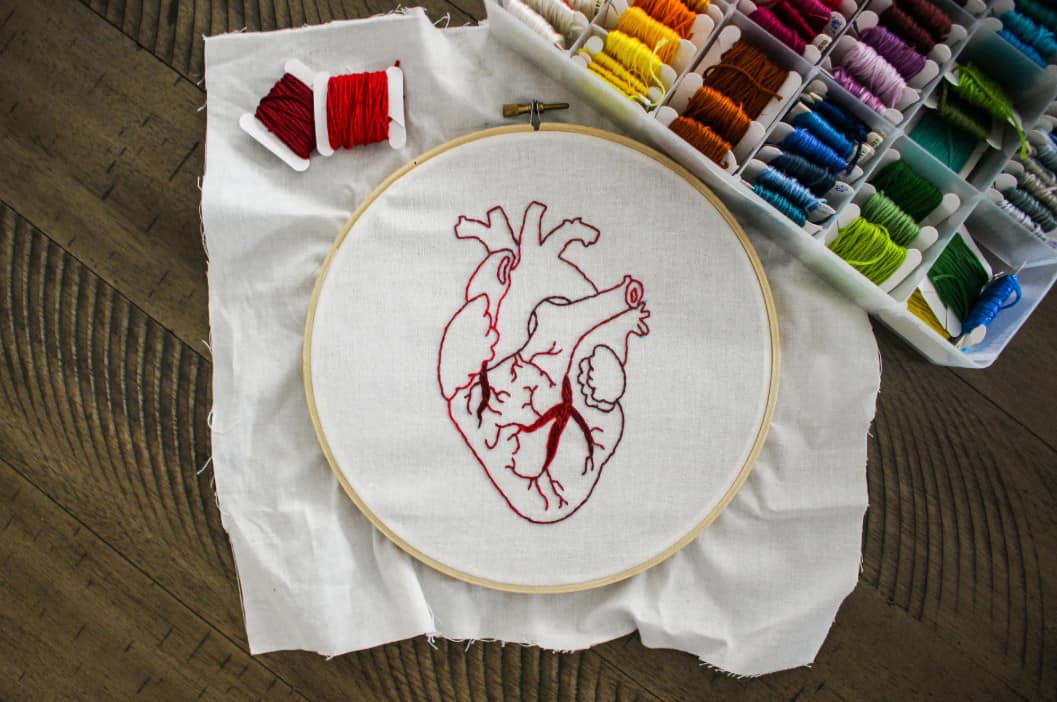If you are trying your hand on embroidery for the first time, it is important to do a little homework. Directly switching to beautiful hand embroidery designs you just watched on Pinterest and YouTube could leave you disappointed.
When it comes to hand embroidery, take slow and small steps. Before starting on anything, here are some of the embroidery tips you need to follow to reach your elite level.
Choose The Fabric
Even before choosing your embroidery design, the very first requirement of embroidery is choosing a fabric. For beginners, it is advisable to choose a fabric made from natural fibres. The best fabric for neat embroidering is quilting weight cotton. Any cotton, linen, or mixture of both fabrics works excellent too. It’s the safest fabric for embroidery.
Another way to choose a suitable fabric is by using a hoop if the fabric looks good enough to embroidery on while in the hoop, it’s good to go.
Excel In Embroidery Stitches
The very basic of every design lies in the embroidery stitches. If you master the fundamental types of embroidery stitches like running stitch, cross-stitch, backstitch, lazy daisy, and French knots – half of your job is done.
Also, if you are looking to embroidery a particular design, excel the embroidery stitches used in the design before getting started.
Choose And Transfer Your Design
Now, choose the design you want, there are lots to choose from in craft shops, or you can search for them online by searching specifically for your chosen theme such as Christmas, Easter or Halloween Embroidery Designs. Once you have your design, you will need to transfer it over to your fabric. There are a variety of ways of doing so:
- Tracing: Using parchment paper and a regular pen, you can trace the embroidery design over your fabric easily.
- Carbon paper: You can use an old fashioned carbon paper usually used by shopkeepers to make a copy of the receipt to trace your design.
- Iron on transfer: Another way to transfer designs is through iron-on transfer. This transfer lets your transfer design on fabric by ironing on the design.
- Water-soluble stabilisers: Firstly, trace your embroidery design on your stabiliser and then place this over your fabric. Start embroidering from over your stabiliser and wash the piece off after that.
- Tissue paper: You can also transfer your design using tissue paper. Trace your design carefully on tissue paper. Place it over your fabric and make visible stitches roughly all around the design. Once you get the idea of a design on fabric, tear the tissue paper, and complete your embroidery.
Choose Your Hoop
Next, using a hoop is an essential part of embroidering for beginners. A wooden hoop is always preferable over a plastic or metal one. It should have a wooden frame with a solid brass top screw for tightening and holding the fabric taut.
Always remember to remove the hoop from the fabric if you are a slow embroider. Chances are, if your fabric piece stays within the hoop for weeks to come, it leaves permanent marks over the surface, which could kill the look of your embroidery.
Type Of Needle To Choose
Embroidering without a proper needle could hinder the finish of your embroidery design. The embroidery needle is as important as choosing the right type of fabric for your design. Choosing a type of needle depends a lot on the fabric you are using for embroidering.
For beginners, a crewel needle or the embroidery needle is an excellent option to start with. The crewel needle has a medium-long eye, which makes it easy to insert the thread in. It also has a sharp tip making it perfect for easy piercing on surface fabrics.
If you are want to embroidery on fabric that has open holes, a tapestry needle works well. It has a long eye, a body thinner than the eye, and a blunt tip. It is suitable for cross stitches and needlework.
Chenille needles are used with woollen thread or thicker thread. They have a long eye, a long thick body with a sharp tip. This needle can be conveniently used to pierce your fabric with a thick thread stretching out the fabric.
If you want to add knots, bullion knots type of design, you should use milliner needles. It has a small round eye, a body as thick as the eye with a sharp tip. The body of a needle is shaped so that a thread can be wrapped all around it and then made to pass through the fabric all at once.
Conclusion
These were some of the requisites and tips on embroidery for beginners. Also, don’t expect too much from yourself on the first try. Take small steps, practice individual stitches and embroidering over different fabrics, increase your materials as you go on, and everything will start falling into place accordingly.



good post thanks for the sharing with us
You’re welcome 🙂
I’ve read this blog and great work for embroidery beginners
Thank you, I am pleased you liked it.